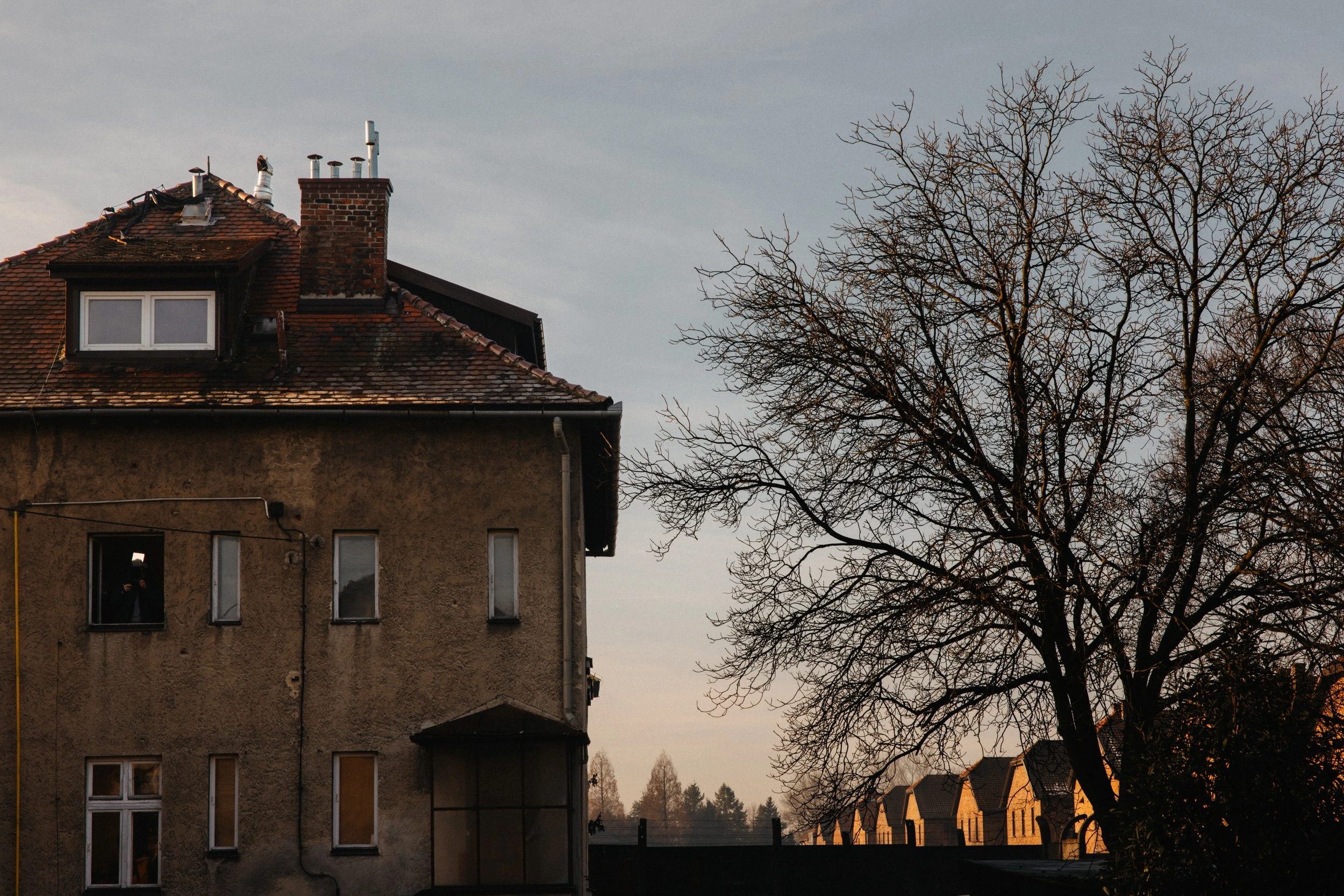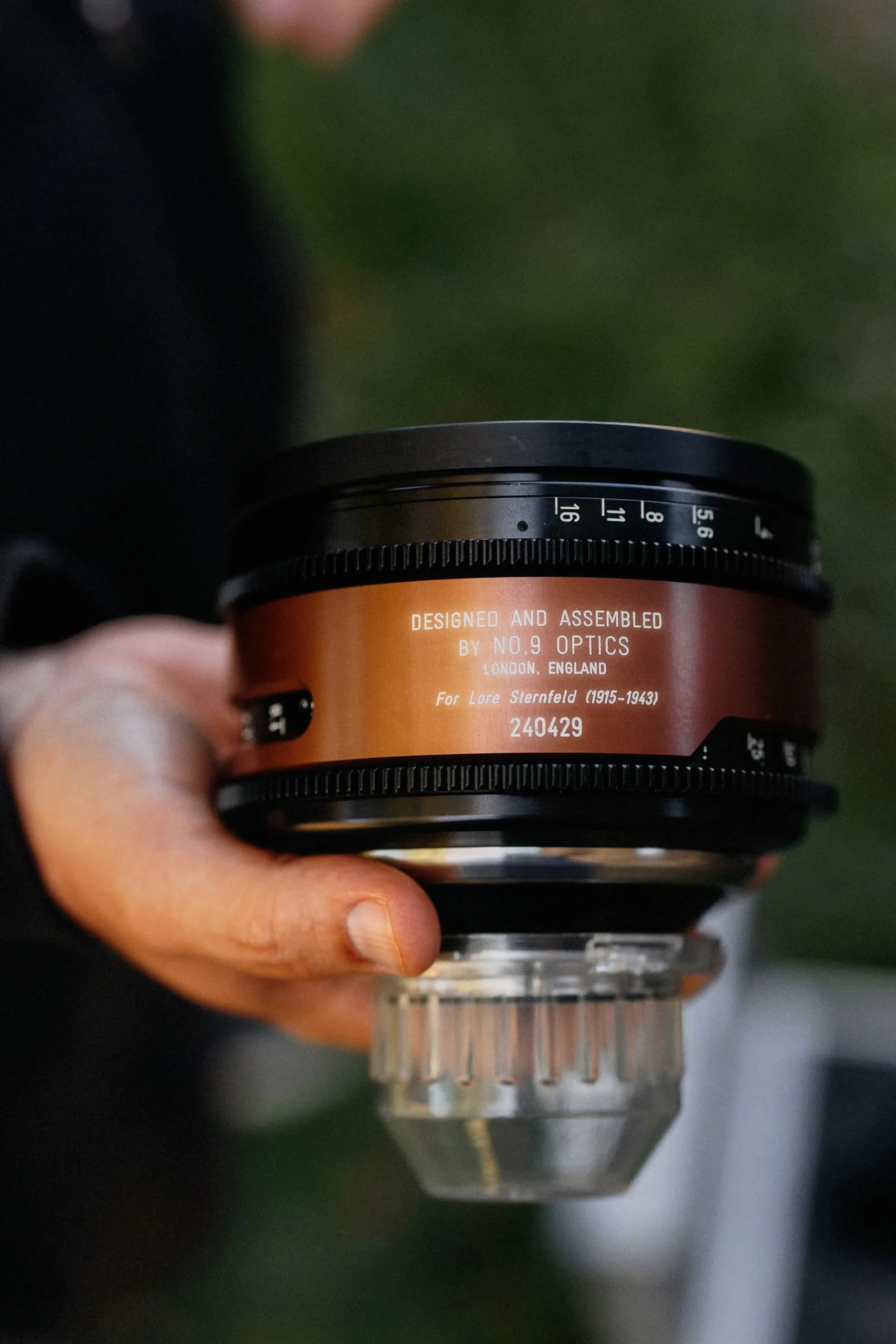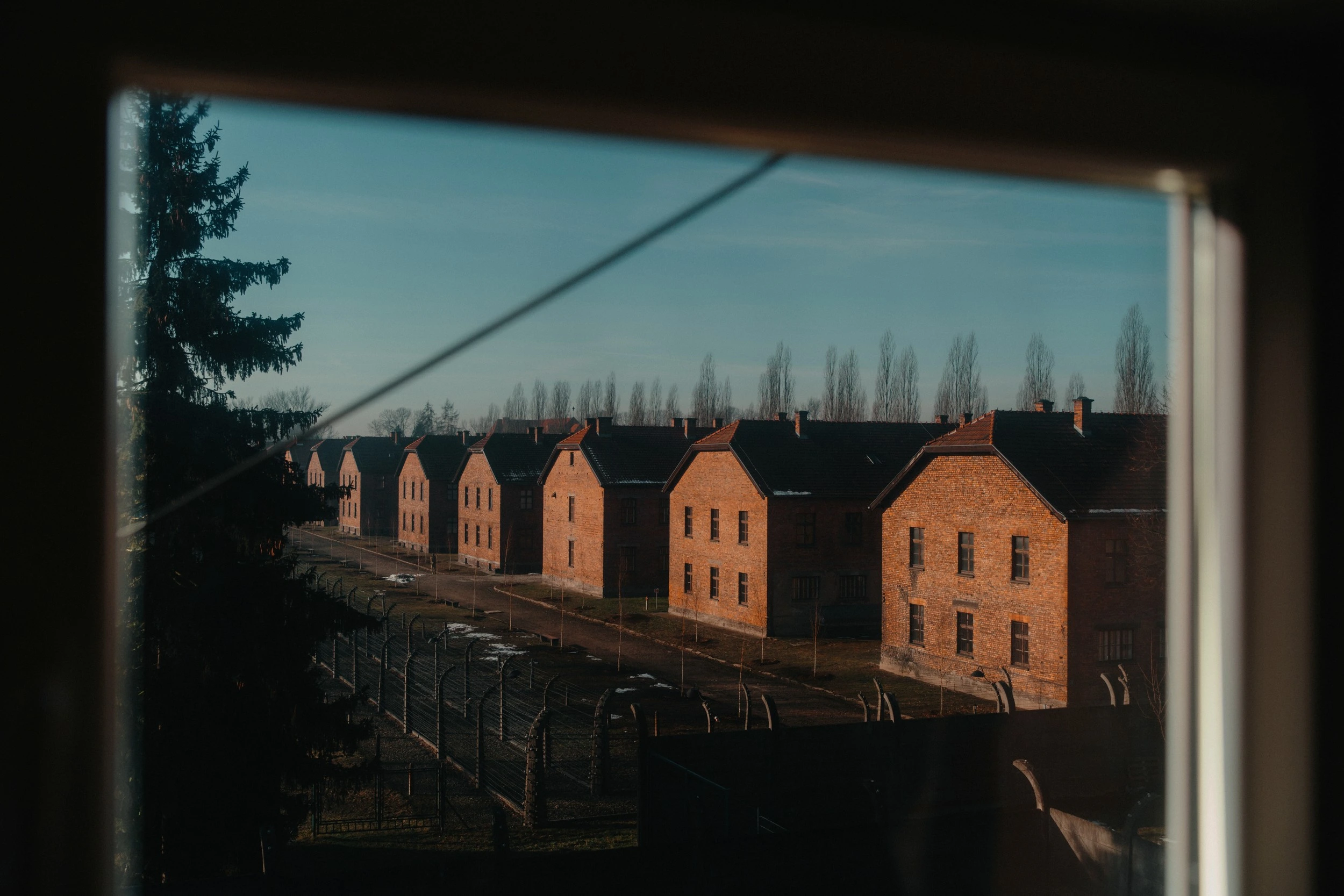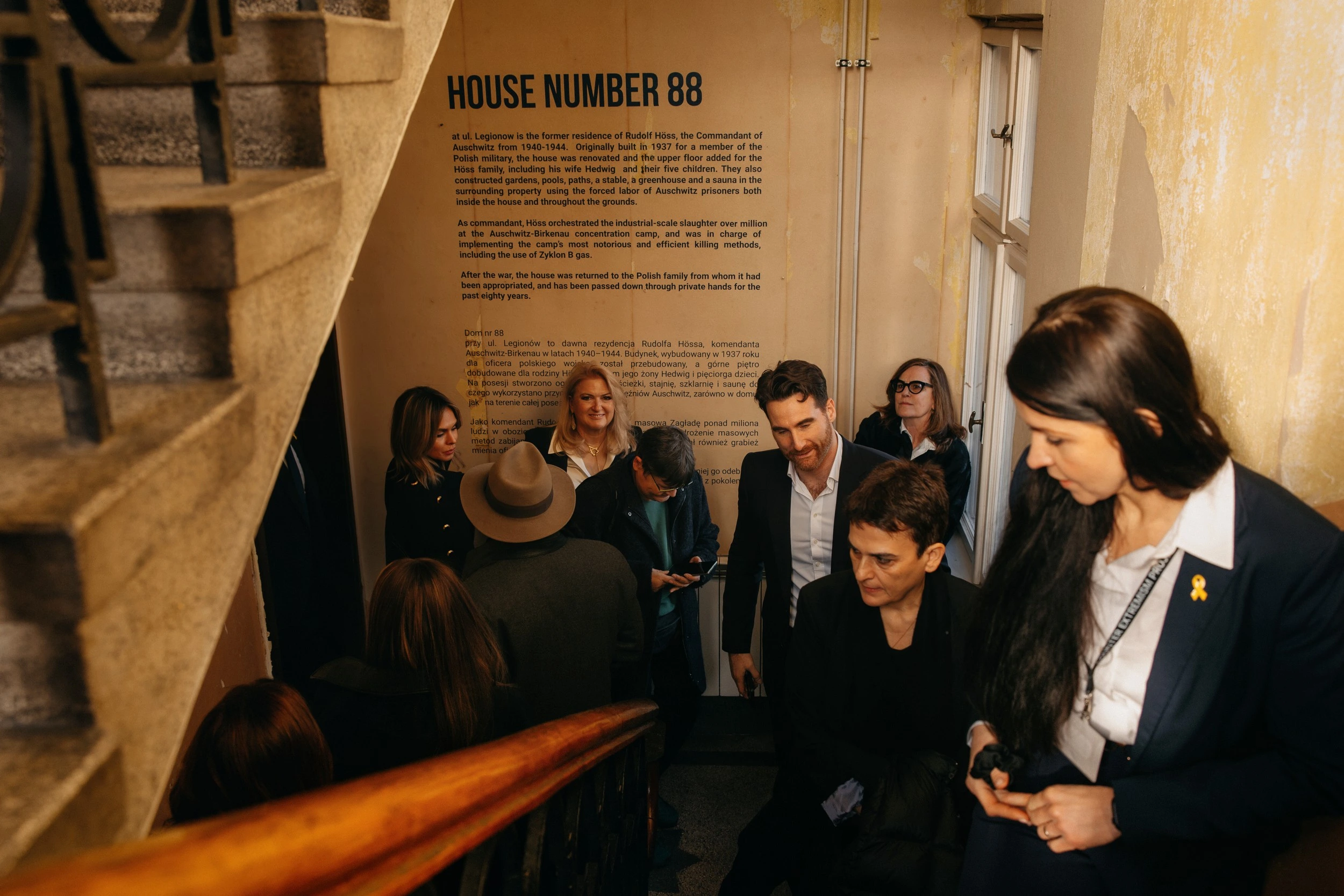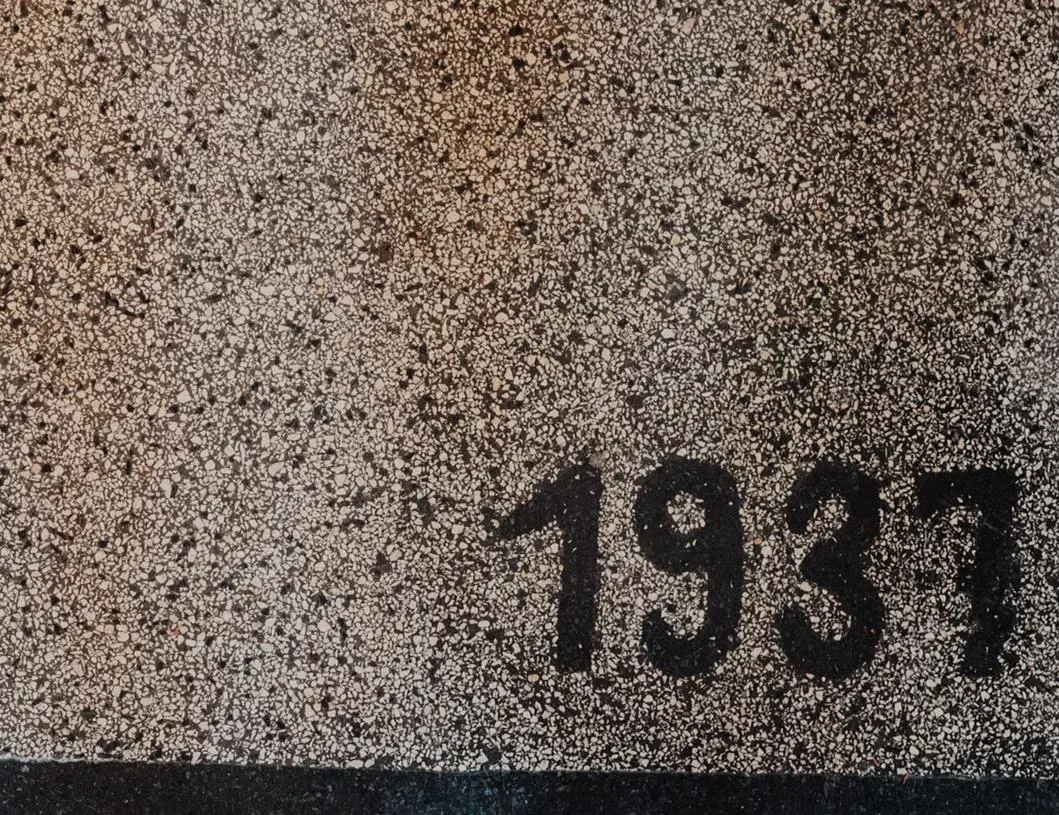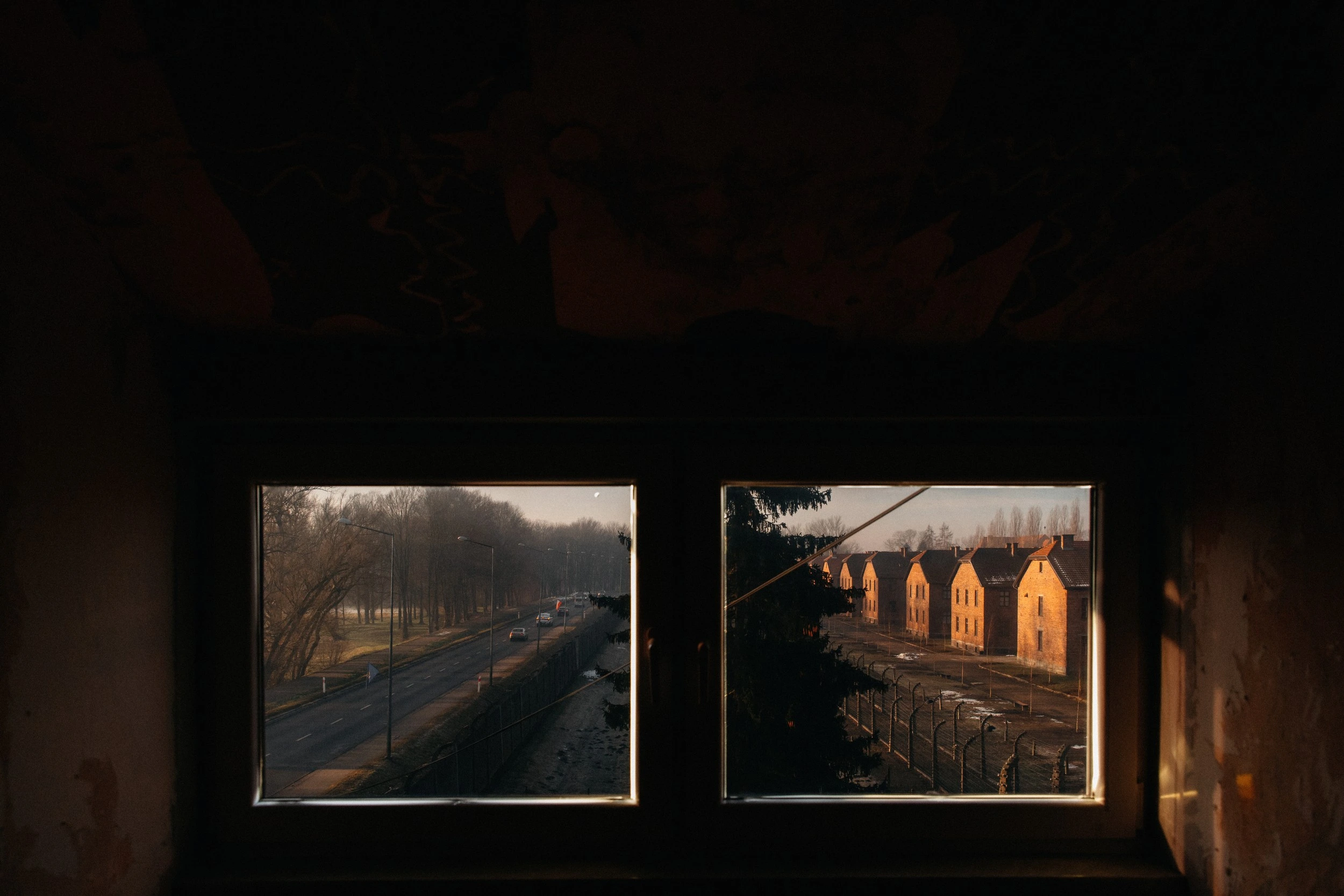ARCHER at House 88
Against the Mainstreaming of the Extreme
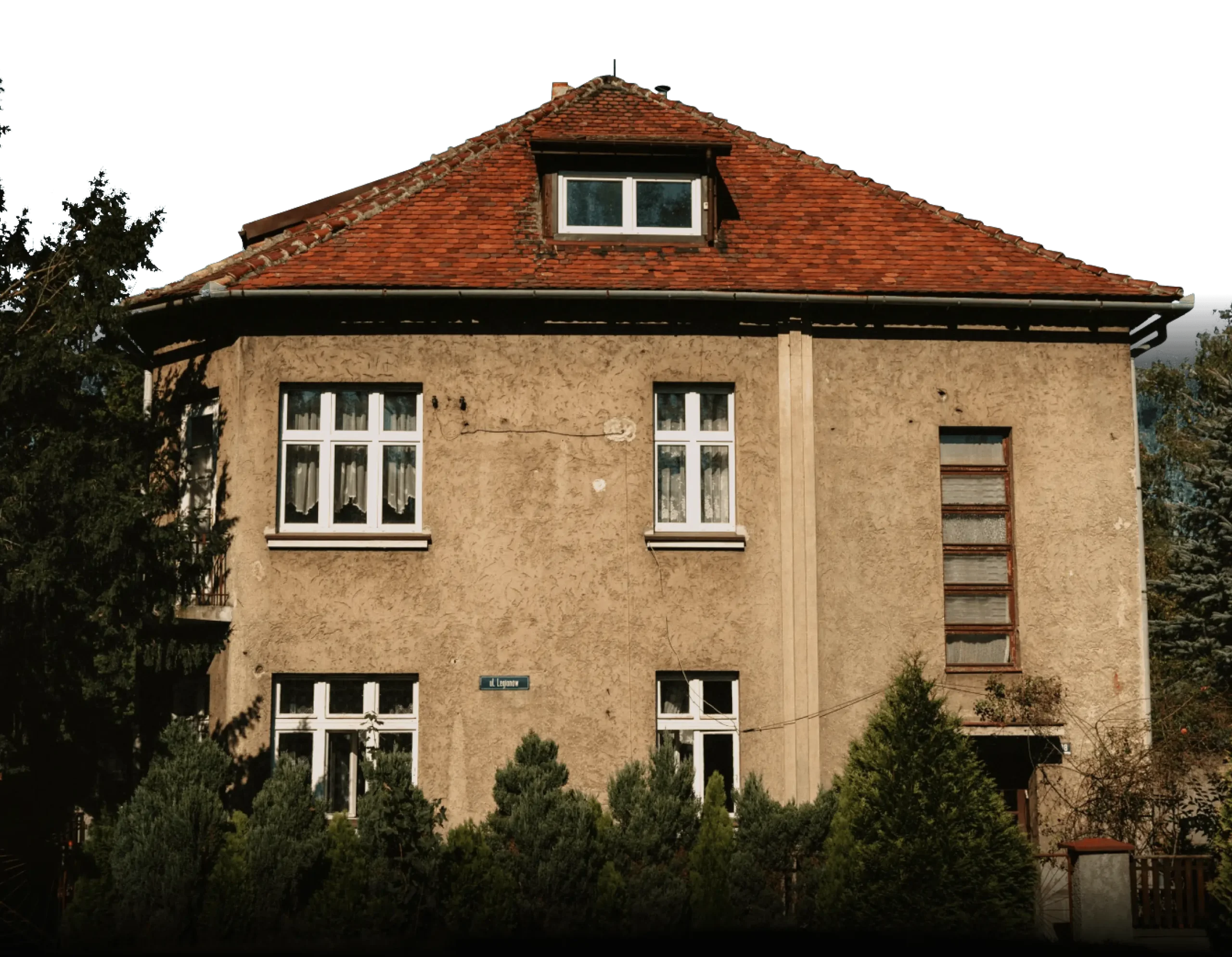
About
Eighty years after the Holocaust, extreme ideology once again threatens to take root. Ideologically motivated violence in the West is surging. Support for terrorist groups and murderous antisemitism are on the rise, too often unopposed, unremarked, or even encouraged. With each act, whole societies are desensitized into accepting the previously unacceptable.
Rudolf Höss, the Commandant of Auschwitz, thrived in a society that had become desensitized to the extreme. In conceiving and carrying out history’s most efficient mass murder, he took greatest satisfaction in his own administrative prowess. It was this professional pride that allowed Höss to reside happily with his wife and five children at 88 Legionnow Street, his villa next door to the Auschwitz-Birkenau concentration and death camp. A few steps from the gas chamber and crematorium of Auschwitz I, Hedwig Höss tended her greenhouse while their children played in the garden. For Höss, enslavement and genocide were not acts of horrifying extremism but merely the proper byproducts of his vision of the world.
The Counter Extremism Project has transformed the home of Commandant Höss, in private hands for 80 years, into the Auschwitz Research Center on Hate, Extremism and Radicalization (ARCHER) at House 88. It will confront not just the consequences of extremism but the quiet, everyday mechanisms that allow people to rationalize, normalize, and ultimately encourage it. Through education, research, advocacy, and art, ARCHER at House 88 seeks to inspire intervention over apathy. As the ultimate symbol of an extremist life made to look ordinary, House 88 stands as a rallying point for confronting the mainstreaming of the extreme.
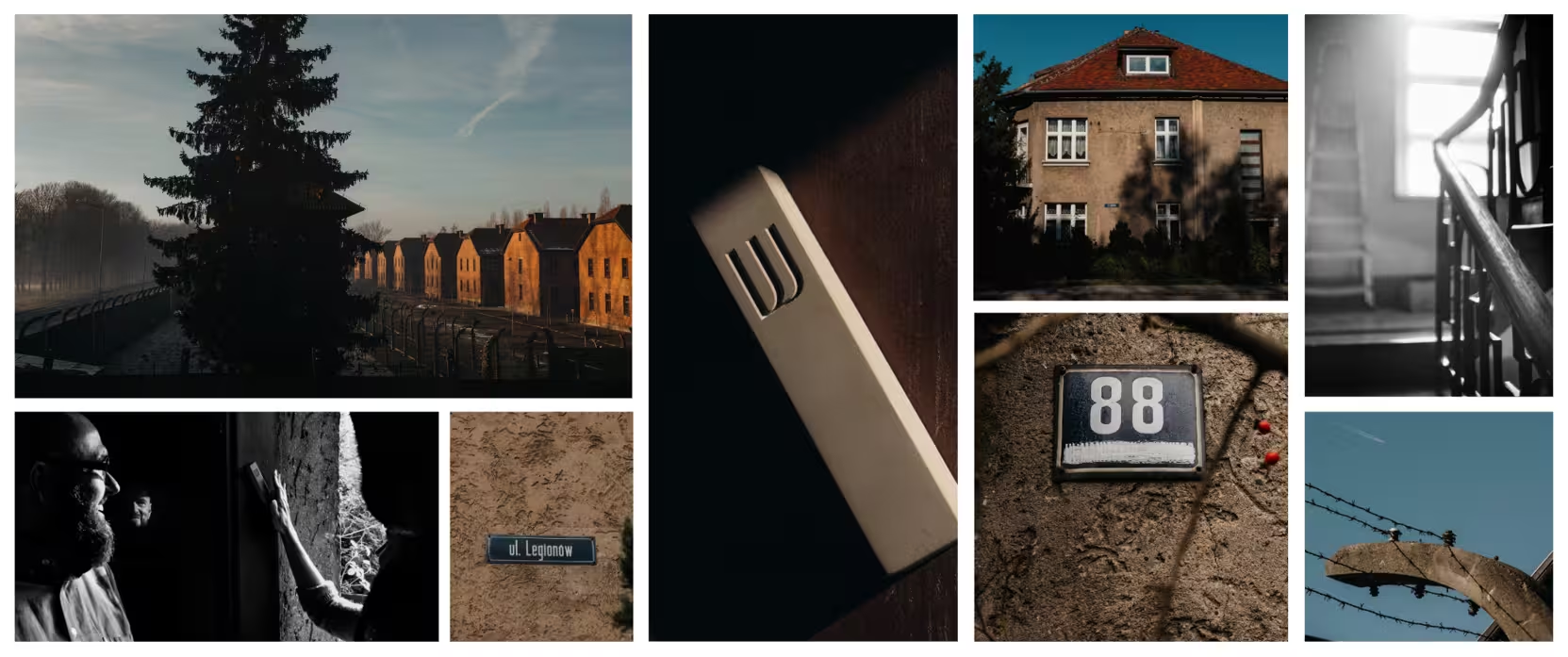

History of House 88: The House Next Door
While living at House Number 88, Rudolf Höss orchestrated the industrial-scale slaughter of millions—designing the methods, building the apparatus, and issuing the orders for the gas chambers of Auschwitz—all while he and his family thrived in an ordinary, comfortable house next door.
Höss and his family created what they called their “paradise,” constructing gardens, a pool, walking paths, a greenhouse, and a sauna—all bordering Auschwitz and within sight of its gas chambers and crematoria. There, the Höss children swam in the family pool, paddled on the river, and doted on the man they knew as a loving father and husband. Meanwhile, Höss had a tunnel constructed between the basement of the villa and his office at the camp, allowing him to move with ease between his idyllic family life and his murderous profession.
The family’s attachment to the house ran so deep that when Höss was transferred to an administrative post in Berlin, his wife Hedwig refused to leave, remaining at the villa with their children until the end of the war.
This “ordinary” life they lived–and apparently exalted in–at House No. 88 resulted from a society that had normalized extremist ideology, enabling its citizens to justify and look past monstrous acts.
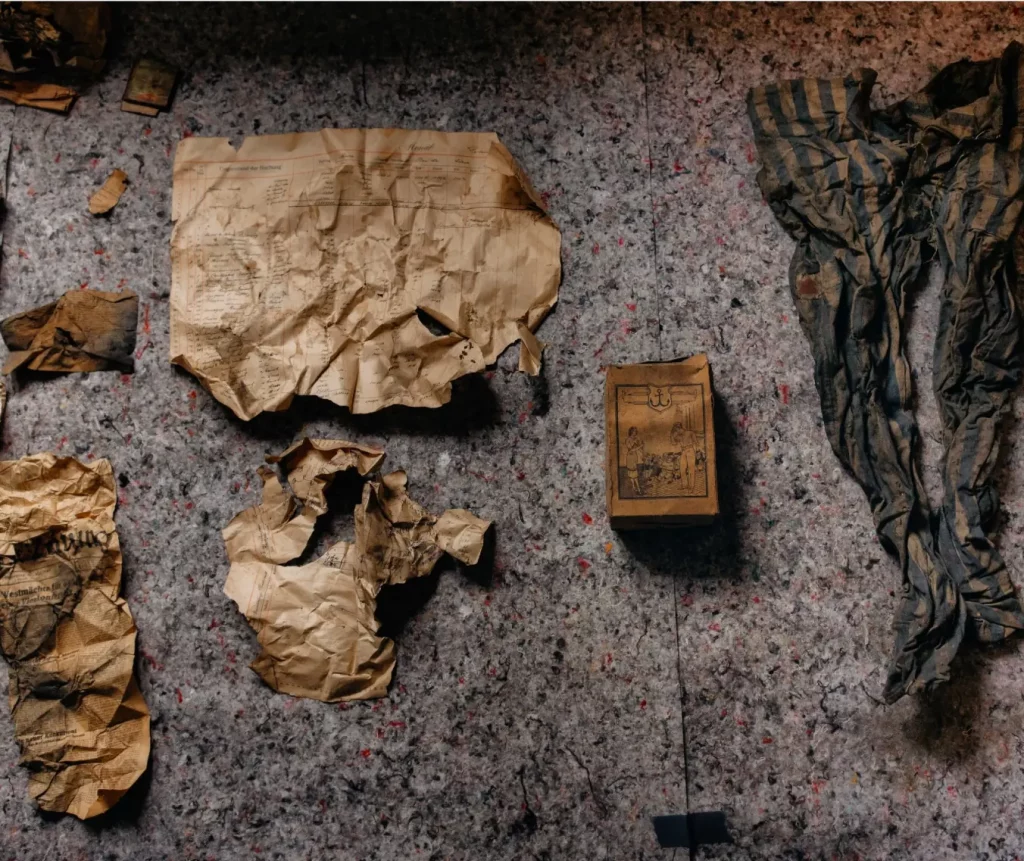
Announcing ARCHER
After years of effort, CEP through its Polish-based leadership has purchased House 88 from its owners who have held the property since the end of WWII. House 88 will focus on programming that combats society’s creeping normalization of the extreme from several angles. While it is imperative that the Auschwitz Museum and places like it remain memorials, the commandant’s former home does not require commemoration. As ARCHER at House 88, it will serve as a dynamic space that preserves the truth of its past while confronting the urgencies of the present.
ARCHER will:
- house an AI-powered global extremism database that tracks, reports, and disrupts extremist propaganda networks
- disrupt extremist financial networks by investigating financial crimes and reporting to tax, treasury, law enforcement, and other authorities
- act as a research and training hub for world-leading experts in countering violent extremism
- advocate for effective policy changes through its global network of multilateral, government, and international organizations
- host a biannual event for world leaders and policymakers
- provide a unique visitor experience that unites art and history to revive the voices and stories of victims while confronting how extreme ideology masquerades as duty, culture, or progress.

Sometimes, we must interfere.
“When human lives are endangered, when human dignity is in jeopardy, national borders and sensitivities become irrelevant. Wherever men and women are persecuted because of their race, religion, or political views, that place must—at that moment—become the center of the universe.”
– Elie Wiesel, 1986

Programming
ARCHER will be the home of dynamic programming aimed at fighting the rise and spread of extremism across the ideological spectrum.
Global Terror and Extremism Database
Robust Hashing and AI Technology to revolutionize online content moderation.
Resident and Non-resident Fellowship Program
Ten resident research fellows per year, recruited globally, helping to build fair and honest parallel institutions for the study of contemporary antisemitism and extremism.
Research & Training
Building on CEP’s existing networks, ARCHER will gather world-leading experts to conduct research, train, educate, collaborate, exchange best practices, and develop effective tactics, strategies, training manuals, and educational materials for countering hate, extremism, antisemitism, and terrorism.
Policy Advocacy
Leveraging a global network of policymakers and multilateral organizations to deliver regular policy briefings, while collaborating with governments and international organizations to drive effective policy changes informed by world-class research.
Biannual Event for Combating Extremism, Hate and Terrorism
Must-attend event for world leaders, policymakers, corporate leaders, and philanthropists to raise awareness of the risks posed by extremism/terrorism and to develop global policy strategies.
Visiting Exhibits
House 88 will be a space for art that confronts extremism, featuring installations on its impact and exhibits that amplify the voices of victims and rehabilitated extremists. Led by CEP’s award-winning team, highlighting the power of art in advocacy.


You can also support
ARCHER through the
Fund to End Antisemitism & Hate
Permanent Exhibits
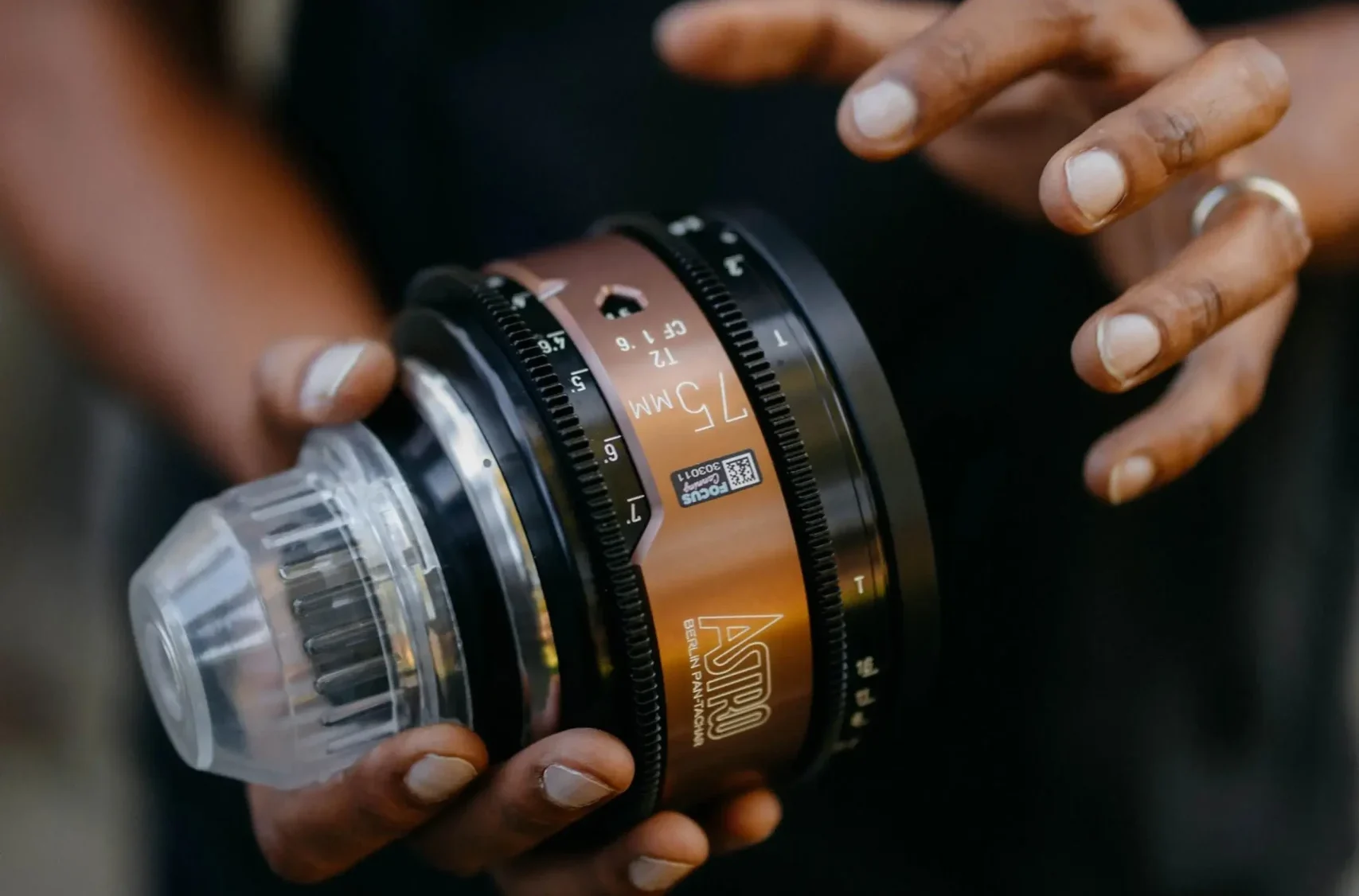
Berlin to Auschwitz: Through Lore’s Eyes.
As part of ARCHER’s artistic programming, we will host a permanent photographic exhibition about Lore Sternfeld, one of Höss’s victims. Lore worked from home as a precision mechanic for the German lens company Astro Berlin, whose popular “Tachar” lenses became a defining feature of the emerging film industry—including in the propaganda films of Leni Riefenstahl. Lore was deported on January 29, 1943 and murdered at Auschwitz at the age of 27. After she was killed, Astro Berlin demanded possession of the lenses and mounts that Lore had made just before her deportation.
Using Lore’s lenses, we will partner with a prominent young photographer to recreate, re–center, and refocus her work, her memories, and her journey.

Eternal Music
For more than thirty years, Italian pianist, composer, and conductor Francesco Lotoro has been collecting music written in concentration camps, excavating and preserving a legacy of defiance in the face of murderous extremism. CEP has partnered with Lotoro to elevate the creativity and strength of those who wrote and performed music and poetry while inside the camps. The collaboration will feature worldwide performances, intimate ‘tiny-desk’ style concerts and recordings in Höss’s home, and a sound hall where visitors to House 88 can experience and reflect upon these pieces as manifestations of the indomitable human spirit in the face of unspeakable evil.
